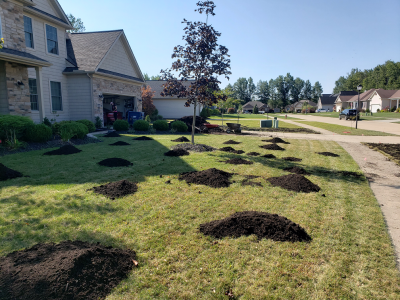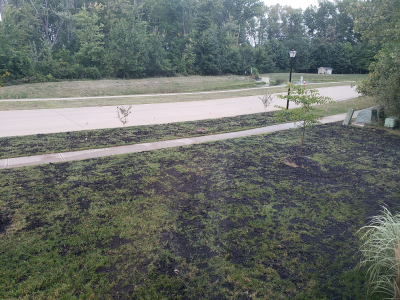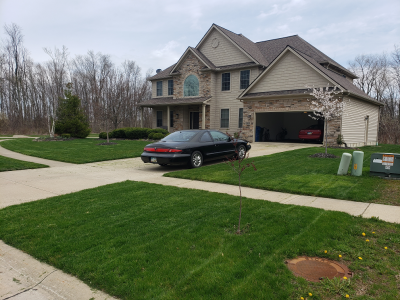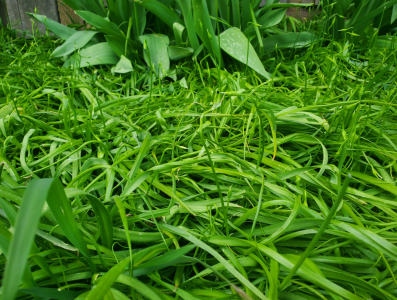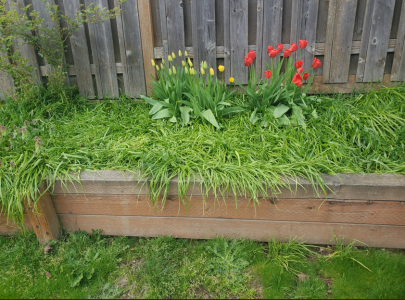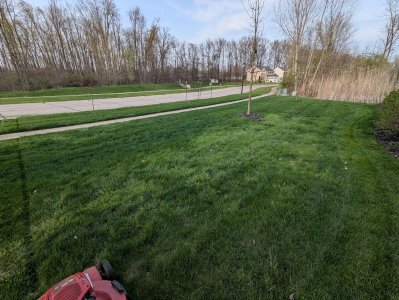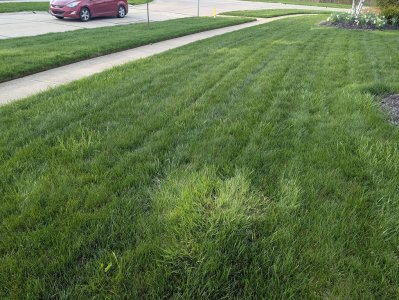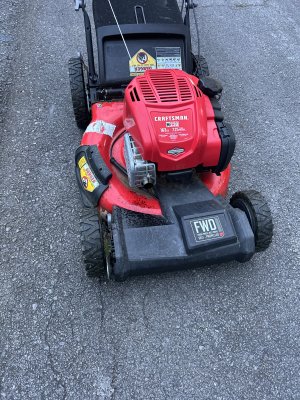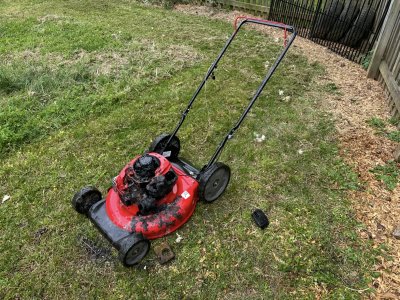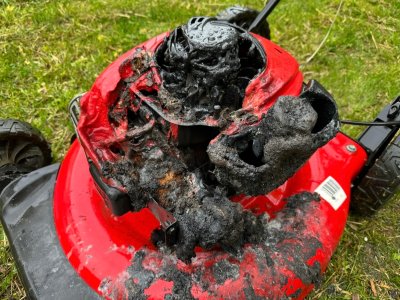- Joined
- Sep 12, 2023
- Messages
- 2,368
- Location
- North Ridgeville, OH
- Cars in Garage
- 2
- Vehicle Details
- 1997 Thunderbird 4.6, 1998 Mark VIII LSC
I'm a cheapskate to be sure - I want nice things but I hate paying other people for them unless absolutely necessary. As such I prefer to do as much as I can - hence why I started wrenching on cars. The same applies for home ownership and landscaping, and lawncare is no exception. I very much have a "keep up with the Joneses" complex regarding the yard, so I handle all the weeds, fertilizer, mowing etc., rather than paying someone else to do it for me. We're coming out of winter now and the lawn is almost ready for its first mow, so now the time for me to address a longstanding problem I've had (but only truly identified about a year ago).
When we moved in 7 years ago the lawn was a disaster - neglected, weedy, thin, etc. It took a few years of consistent fertilizing, weeding, overseeding etc. but the lawn is mostly remediated now, with relatively few thin patches and weeds. Any weeds that do appear I just spot treat with a selective herbicide and it usually dies off within a few days. Except for.... poa trivialis, aka rough bluegrass.
I identified it last year when I noticed more of it popping up throughout the lawn, crowding out and killing the fescue/ryegrass/bluegrass mix the rest of the lawn primarily consists of. It's an annoying shade of light green, grows faster than the rest of the lawn, has a very thick, carpety texture on top and the base is a rough, woody and ratty mess of ick. Altogether I must have at least 1000-1500 ft² of it throughout the yard, and I want it gone.
I was reading up on it last fall and the general consensus was that in order to kill it, you need to use a nonselective herbicide like glyphosphate - but that's been phased out because of the huge RoundUp cancer scandal a year or two ago. The alternative is to go out and dig it up by hand. With probably 1500 ft² of that crap... not happening. There are other nonselective herbicides out there, but I got to thinking... do I really want these huge patches of dead grass for several months? Not really. Wifey encouraged me to look for alternatives, so I did more research.
I found this self-proclaimed expert on poa and his recommendations were not to try killing it with herbicides, but to dry it out to kill it. Apparently trying to control it via herbicides alone is not very successful because the stolons can live for over a year even if they're isolated from the former plant, so it will often come back after a few months. Moreover, its roots are very shallow meaning it requires fairly consistent surface moisture to thrive. It also can't take the summer heat so it grows (and is most susceptible to being controlled) in the cooler months of spring. Finally, the selective herbicide Tenacity (a.k.a. mesotrione) has been known to kill/weaken it when applied during the cooler growing season in early spring. Rather than treating the symptom that is poa trivialis by killing it with herbicides, treat the cause to make it harder for it to come back: excessive surface moisture.
With this information, I've curated a bit of a regimen to try and kill off this crap over the next year or so...

When we moved in 7 years ago the lawn was a disaster - neglected, weedy, thin, etc. It took a few years of consistent fertilizing, weeding, overseeding etc. but the lawn is mostly remediated now, with relatively few thin patches and weeds. Any weeds that do appear I just spot treat with a selective herbicide and it usually dies off within a few days. Except for.... poa trivialis, aka rough bluegrass.
I identified it last year when I noticed more of it popping up throughout the lawn, crowding out and killing the fescue/ryegrass/bluegrass mix the rest of the lawn primarily consists of. It's an annoying shade of light green, grows faster than the rest of the lawn, has a very thick, carpety texture on top and the base is a rough, woody and ratty mess of ick. Altogether I must have at least 1000-1500 ft² of it throughout the yard, and I want it gone.

I was reading up on it last fall and the general consensus was that in order to kill it, you need to use a nonselective herbicide like glyphosphate - but that's been phased out because of the huge RoundUp cancer scandal a year or two ago. The alternative is to go out and dig it up by hand. With probably 1500 ft² of that crap... not happening. There are other nonselective herbicides out there, but I got to thinking... do I really want these huge patches of dead grass for several months? Not really. Wifey encouraged me to look for alternatives, so I did more research.
I found this self-proclaimed expert on poa and his recommendations were not to try killing it with herbicides, but to dry it out to kill it. Apparently trying to control it via herbicides alone is not very successful because the stolons can live for over a year even if they're isolated from the former plant, so it will often come back after a few months. Moreover, its roots are very shallow meaning it requires fairly consistent surface moisture to thrive. It also can't take the summer heat so it grows (and is most susceptible to being controlled) in the cooler months of spring. Finally, the selective herbicide Tenacity (a.k.a. mesotrione) has been known to kill/weaken it when applied during the cooler growing season in early spring. Rather than treating the symptom that is poa trivialis by killing it with herbicides, treat the cause to make it harder for it to come back: excessive surface moisture.
With this information, I've curated a bit of a regimen to try and kill off this crap over the next year or so...
- Spot treat the areas with high concentrations of poa using mesotrione
- After a couple weeks, dethatch (to remove weakened poa and its roots/stolons)
- Core aerate and amend the soil with 1/8" of sand (this helps dry out the top layer of soil, making it harder for poa to grow)
- Reapply mesotrione if necessary to continue to kill off the remaining poa (if it proves effective)
- Adjust the irrigation schedule to water more deeply and infrequently (contributes to drier soil where the poa's roots are)


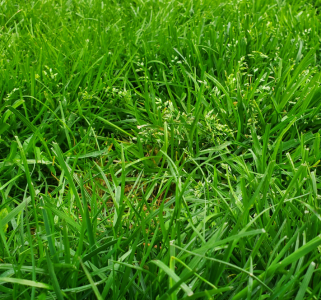
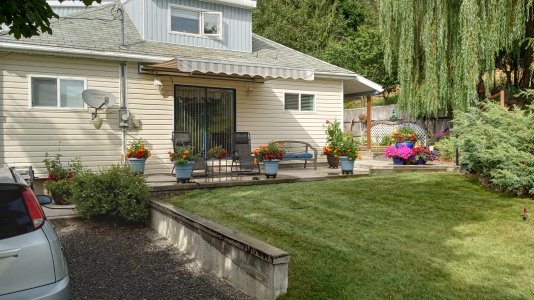
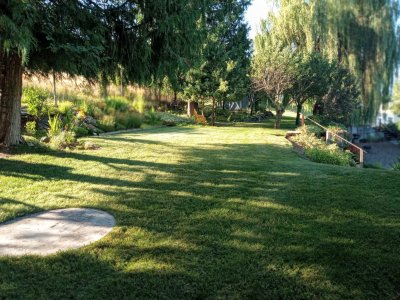
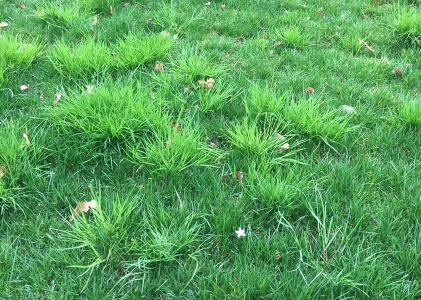
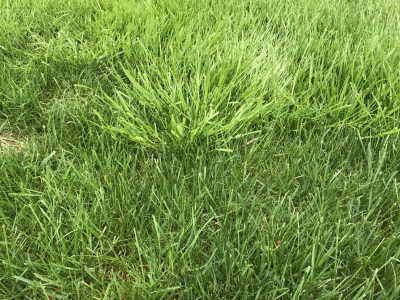
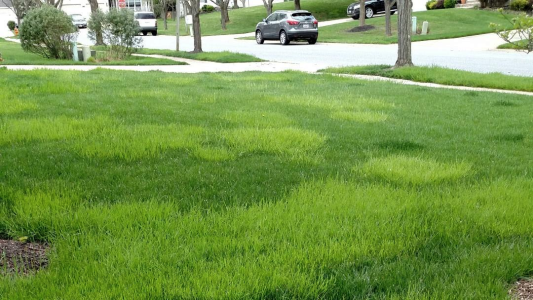
 )
)